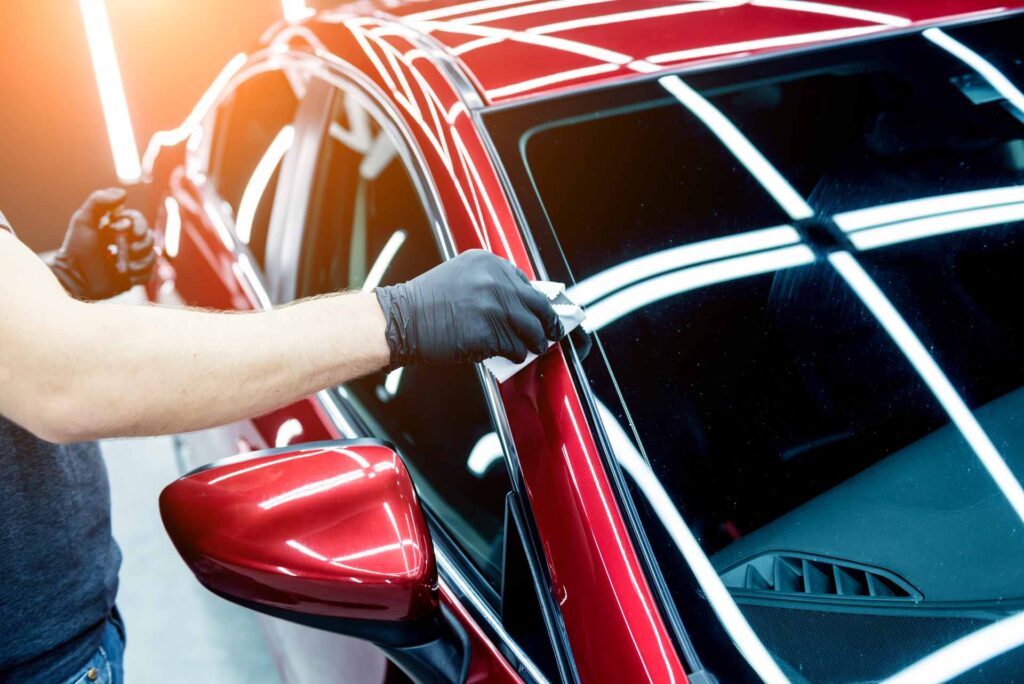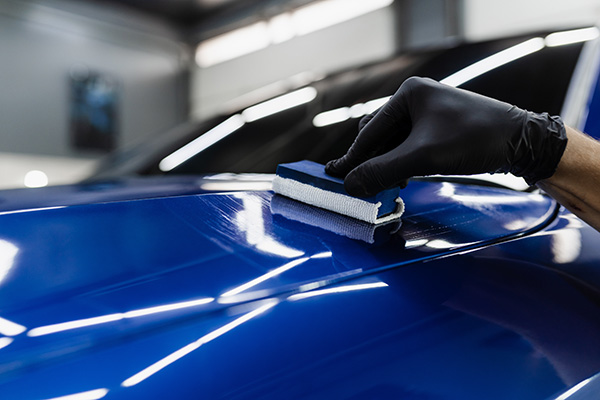The Value of Ceramic Coating: Safeguarding Your Car's Outside With Accuracy
In a period where maintaining the functional and aesthetic honesty of your vehicle is vital, ceramic layer emerges as an essential option. This safety layer not just guards against environmental misfortunes yet likewise raises the visual charm of your cars and truck. With its one-of-a-kind bonding residential or commercial properties, ceramic covering offers a level of protection that far goes beyond traditional waxing methods. How specifically does it achieve such remarkable results? As we check out the subtleties of its application and contrast it to other choices, one can not aid but wonder regarding the specifics that make this modern technology essential for modern-day vehicle treatment.
Benefits of Ceramic Coating
When it pertains to preserving an auto's aesthetic appeal, ceramic finishing offers substantial benefits. This sophisticated safety layer gives a durable guard against environmental contaminants, consisting of dirt, crud, and damaging UV rays. By developing a semi-permanent bond with the automobile's paint, ceramic layers successfully avoid oxidation and fading, guaranteeing that the auto preserves a shiny, showroom-like surface for a prolonged period. This not just improves the lorry's visual charm however also adds to its long-lasting worth.
In enhancement to its protective top qualities, ceramic covering provides remarkable hydrophobic properties, creating water and other fluids to grain off easily. This feature simplifies the cleaning procedure, as dust and particles are less most likely to adhere to the surface area, lowering the regularity and effort needed for maintenance. The finish's resistance to chemical spots from acidic contaminants like bird droppings and tree sap is one more notable benefit, minimizing potential paint damages.
Ceramic layers also boost scratch resistance, providing a layer that can absorb small abrasions and swirl marks. This quality is particularly valuable in preserving a pristine surface, lowering the likelihood of visible flaws and protecting the honesty of the automobile's paintwork over time.

Just How Ceramic Covering Works
Recognizing the technicians behind ceramic finishing exposes its efficiency as a safety option for automobiles. Ceramic coatings are essentially liquid polymer applications that chemically bond with an automobile's manufacturing facility paint, creating a protective layer.
Application of ceramic covering involves a meticulous process. At first, the vehicle's surface area have to be thoroughly cleansed and decontaminated to ensure optimum attachment. Once used, the liquid polymer creates a semi-permanent bond with the paint, hardening into a transparent, durable shield. This shield boosts the automobile's gloss and hydrophobic residential or commercial properties, facilitating simpler cleansing by creating water and contaminants to grain and slide off effortlessly.
Furthermore, the coating's molecular structure gives resistance to small scrapes and chemical stains. Unlike waxes or sealers that sit on top of the paint, ceramic coverings incorporate with the surface area, using lasting security. This integration is basic to its efficiency, ensuring the car's coating continues to be pristine for many years.
Contrasting Ceramic Coating to Alternatives
In the realm of automotive protection, ceramic finishing stands as an awesome option when contrasted to traditional alternatives such as sealers and waxes. While waxes provide a short-term shiny finish, usually Discover More lasting just a couple of weeks to months, ceramic finishings supply a longer-lasting option, typically withstanding for many years. This toughness is credited to the chemical bonding that occurs when ceramic coatings are used, creating a solid layer that is resistant to environmental threats.
Contrastingly, sealers, although even more resilient than waxes, still disappoint the durable protection offered by ceramic coatings. Sealers can normally last for up to a year, providing an artificial shield against particular aspects. However, they do not have the remarkable hydrophobic properties and UV defense that ceramic finishings deliver.
Moreover, ceramic layers supply boosted scratch resistance, which neither waxes nor sealers can successfully match (ceramic try this site coating). This is especially advantageous in keeping a cars and truck's beautiful look. Furthermore, ceramic layers streamline maintenance initiatives by reducing the adherence of dirt and crud, thus promoting much easier cleansing. In summary, while standard waxes and sealants provide standard protection, ceramic finishes present a detailed, long-term option that significantly improves and maintains the vehicle's exterior coating.
Application Refine Described
Applying ceramic coating to a vehicle calls for a careful process to ensure optimum results and sturdiness. Once cleansed, the automobile is dried and brightened to get rid of any blemishes, as any type of existing swirls or scrapes can become more noticable after the finishing is used.
Complying with surface prep work, the application of the ceramic covering starts. The finishing is usually used in a climate-controlled atmosphere to stop dirt particles from picking the freshly cleansed surface. Making use of an applicator pad, the ceramic covering is used in small areas to ensure even coverage. It is necessary to follow the manufacturer's guidelines regarding the proper curing time and application density.
After application, the covering needs a specific treating duration, throughout which the vehicle ought to be secured from water and impurities. This curing process can vary relying on the item yet generally ranges from 24 to two days. Inevitably, this thorough process is critical in accomplishing a durable and shiny coating.
Upkeep Tips for Longevity
To maintain the longevity of a ceramic coating, adherence to a disciplined maintenance regimen is crucial. Stay clear of automated cars and truck cleans, as their severe brushes can compromise the coating's integrity.
Post-wash, drying out the automobile with a clean microfiber towel prevents water places that might deteriorate the coating over time. In addition, apply a ceramic coating booster every couple of months. These boosters enhance the hydrophobic residential or commercial properties and boost the finishing's protective capacities, ensuring it stays effective against impurities.
Maintain in mind that car parking places play an image source important function in upkeep. ceramic coating. Whenever possible, park in shaded locations to decrease UV direct exposure, which can slowly compromise the covering. For long-lasting storage space, take into consideration making use of a vehicle cover for included protection against environmental components
Final Thought
In conclusion, ceramic coating offers as a vital protective layer for car outsides, offering lasting protection against ecological aspects such as dirt, uv, and crud rays. Recognizing the application process and adhering to upkeep suggestions are crucial for taking full advantage of the longevity and efficiency of ceramic covering.
When it comes to protecting a car's visual charm, ceramic finishing uses significant benefits. By creating a semi-permanent bond with the automobile's paint, ceramic coatings successfully avoid oxidation and fading, making certain that the vehicle keeps a shiny, showroom-like finish for a prolonged period. Ceramic coatings are essentially fluid polymer applications that chemically bond with a vehicle's manufacturing facility paint, creating a safety layer. In recap, while conventional waxes and sealants use basic security, ceramic coverings provide a comprehensive, long-lasting remedy that substantially improves and preserves the vehicle's outside surface.
